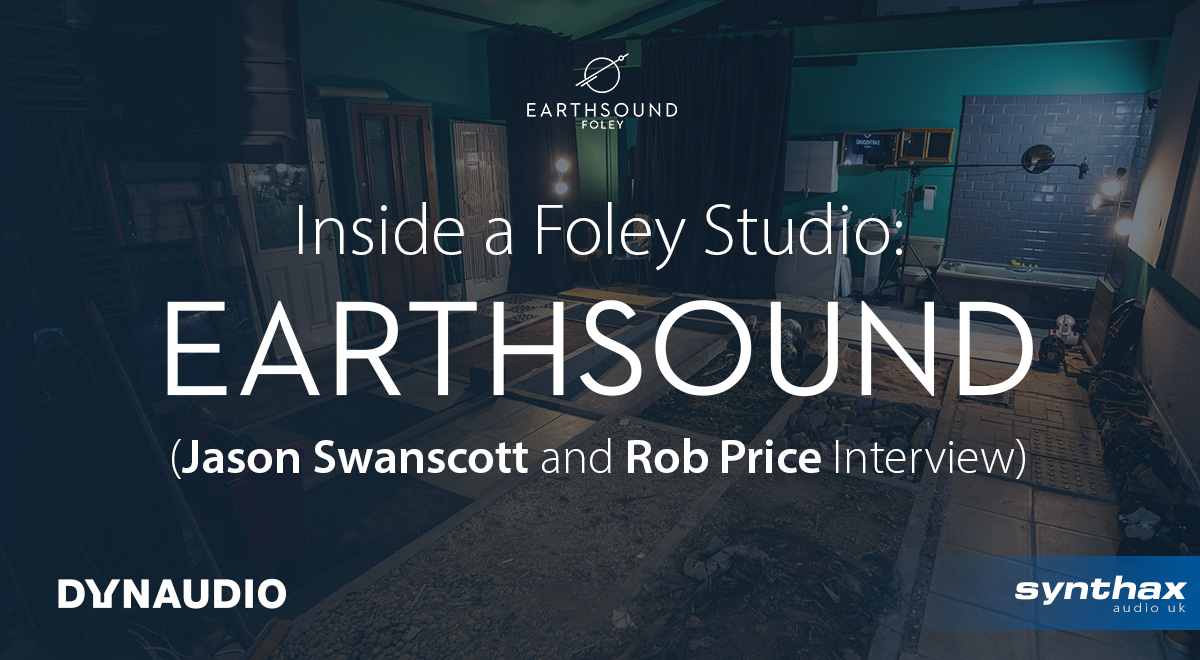
Earthsound Foley take us inside their purpose-built Foley studio in the Bedfordshire (UK) countryside.
One of the most unique roles in Film and TV Sound is undoubtedly that of the Foley artist.
Whether it’s a feature-length film or a 30 second TV advert, a huge number of the sounds the audience hears are actually re-recorded in a studio after the video has been shot, and added back in during post-production.
Maybe the location team didn’t fully capture the sound they wanted on-set. Or there could be a requirement for additional layers, in order to provide the highest audio quality – and maximum impact – for the final, finished scene.
This is where the Foley artist steps in, re-creating the movements of each actor in time to the footage, as well as adding any other sounds a TV show or film might need (including creating entirely new sounds through the ingenious use of props).
If you’ve ever wondered what it’s like to work in a Foley studio, join us as we step inside the newly-built Foley stage designed and operated by Earthsound – a company set up by Foley Artist Jason Swanscott and Sound Designer Rob Price – who recently upgraded their studio monitors to the Dynaudio Core Series. Coconut shells at the ready…
Inside a Foley Studio | Earthsound Post Interview
See more videos at Synthax TV
A day in the life of a Foley artist
What is foley?
“Foley artists are named after someone called Jack Foley, who originated this art form,” Sound Designer Rob Price tells us. “Somebody is performing bespoke sound effects to picture, which are mostly mimicking what the actors are doing on-screen.
“So putting the footage up and copying what the actor does – and sometimes augmenting and replacing what they do – but essentially bringing those sounds into the show. That’s what Jason as a Foley artist will be doing.”
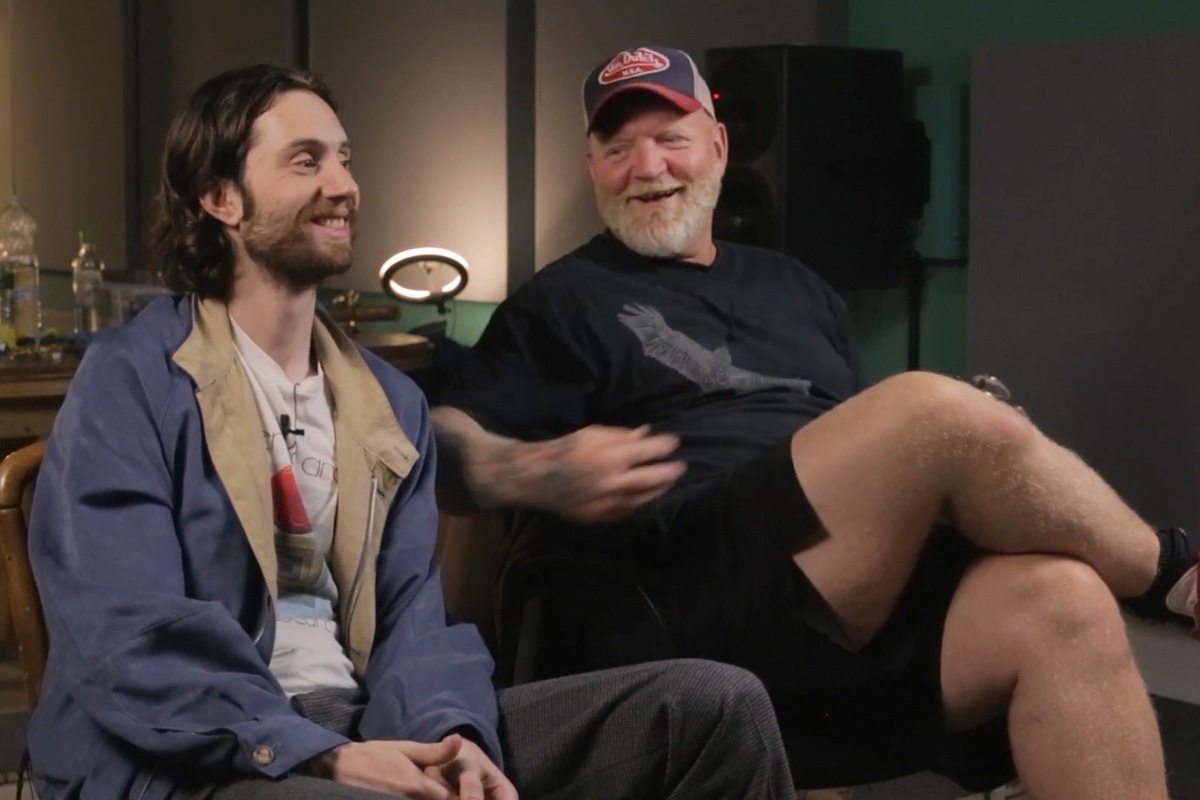 Founded by business partners Jason Swanscott and Rob Price, Earthsound is a purpose-built recording studio just outside London, and provides professional Foley and sound design services for TV, film and advertising. Recent projects include Guy Ritchie’s The Covenant, Luther and The Lazarus Project, as well as the upcoming Bob Marley biopic, Bob Marley: One Love.
Founded by business partners Jason Swanscott and Rob Price, Earthsound is a purpose-built recording studio just outside London, and provides professional Foley and sound design services for TV, film and advertising. Recent projects include Guy Ritchie’s The Covenant, Luther and The Lazarus Project, as well as the upcoming Bob Marley biopic, Bob Marley: One Love.
Having worked in film for close to 15 years, Rob has a wealth of experience in the sound department as a Foley editor and Foley mixer, roles that work in tandem with the artist – setting up microphones and mixing the incoming sound on the desk, while bouncing ideas back and forth with the artist.
Jason’s history as a Foley artist stretches back even further – a veteran of the craft, he’s been putting sound to picture for the past three decades. Without diving too far into his credits list, let’s just say as a UK company it would be remiss of us not to include a couple of other stone-cold classics from Director Guy Ritchie – Lock, Stock and Two Smoking Barrels and follow-up Snatch, two icons of British cinema.
“A lot of people think I just walk on the spot all day,” laughs Jason in response to the question of what an average day in the studio looks like for him.
“As an artist I will perform, and put any noise in the world that I’m capable of doing, on a soundtrack. I can run up a hill, fall down a pit. I can swim in the sea with sharks, I can shoot a laser – not an actual one but you know, I can make the noise.”
“You could do a laser for them, we’ve got slinkies,” interjects Rob.
“Yeah I can do you a space laser if you want,” Jason chuckles. “Basically I can go anywhere in the world – or outer space – and make bespoke noises for your film, right here in our studio.”
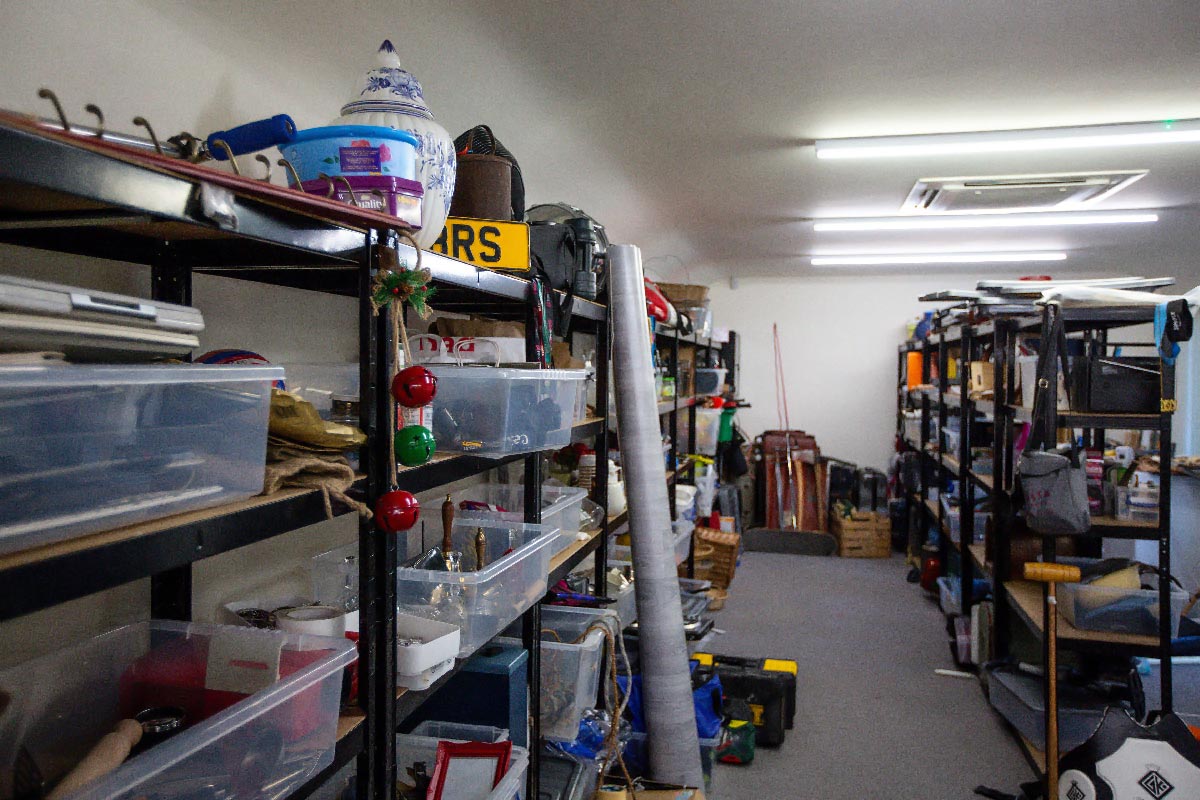
What is the process of recording Foley?
Turning slinkies into lasers aside, we were curious to know more about how the guys start the process of recording Foley.
“You begin by doing what is called the moves,” Rob explains, “which is essentially performing the cloth or clothes movements of the actors as they’re moving around. It gives you a good chance to get a sense of the project – you’re putting this base layer in, and asking yourself ‘okay, what are we going to need to do in this scene? Do we attack it this way or that way?’
“Each project is different. You might be working with somebody who you’ve had extensive conversations with beforehand, or you might just be sent the footage cold on the day.
“Depending on the workflow, we may then move on to footsteps. So breaking the scene down, recording steps on all of the different surfaces. This helps get a sense of the different characters – who they are – and helps us understand how we want to drive the story with the performance element.
“Then we have the spot effects, which is anything that an actor interacts with physically along with many other sounds in the scene, which we’ll also provide a sound effect for.
“So we tend to break it down into more manageable chunks first. And then it’s on to recording it all.”
Of course, no trip to a Foley studio would be complete without seeing the guys in action, and Rob and Jason kindly treat us to a quick ‘behind the scenes’. A clip from a TV show is brought up on the screen – a fantasy/horror that involves one of the characters being levitated by an unseen assailant, then slammed repeatedly into the floor.
(This actually takes place in the background, with the foreground showing two actors in conversation, unaware at first of what’s going on in the room behind them.)
It’s immediately clear that Rob and Jason are at the top of their game – like a finely trained musician, Jason springs into action, swinging his heavy coat on to the floor perfectly in sync with each shot.
The two then exchange a couple of words about a table that’s barely visible, which the character actually knocks slightly during one of the slams.
Jason quickly drags a table over – ready-prepared for such occasions, with an assortment of random objects scattered across it – and they do another take, this time with Jason simultaneously knocking into it as his coat hits the ground.

At the same time, Rob has already grabbed an EQ in Pro Tools and started making some finely placed cuts, a move which he modestly insists is simply the result of making these decisions “thousands of times over”.
This makes us wonder – with so many sample libraries and other tools available these days, are all of the sounds in each project original?
“Sometimes you augment sounds with other recordings, but the vast majority of the time, what you’re recording is bespoke,” Rob explains.
“That’s primarily the point of Foley – to record new material that’s original and specific to the action on screen, and in-line with the individual characters. Not just their movements, but their emotions as well. Responding to when they’re angry, tired, upset – it’s a different sound. Even if it’s something you’re only subtly picking up on.”
“At the end of the day I’m an artist,” says Jason. “I’m acting – I act every day. It could be a three-year-old little girl running across floorboards in slippers, or it could be a six-foot blonde with red stilettos on – I’ve actually got a couple of pairs of those as well!”
“Or it’s like the killer creeping through the house,” says Rob. “Leather boots, got a bit of creak on, a bit of menace. Some of these things are tropes but there are other really subtle things you can do.”
“It’s performance art. Back in the day, a lot of Foley artists came from theatre or acting backgrounds.”
“Or dance,” adds Jason.
“Yeah. A character hangs up a step for half a second in hesitation – small things like that,” Rob continues. “That’s mainly what you’re trying to do, in all areas of sound design for film. Just trying to work these little openings, to keep the story going.”
It’s these small touches which make it immediately apparent why Earthsound is chosen by some of the biggest names in film. As we discuss the scene they’ve just been recording, Rob points out something we’d likely never have spotted – there’s actually two clutches of microphones set up, one close, one further away.
Jason then draws our attention to the clip again – although the action in the first shot was in the distance, the camera briefly cut to a closer shot, then back to the original again.
“In this instance, it’s likely we’ll use the second set of mics for the distance shots, then the first set for the closer ones,” Rob says.
Perfectly logical of course, but something you probably wouldn’t think of unless you’re a seasoned pro in film production sound!
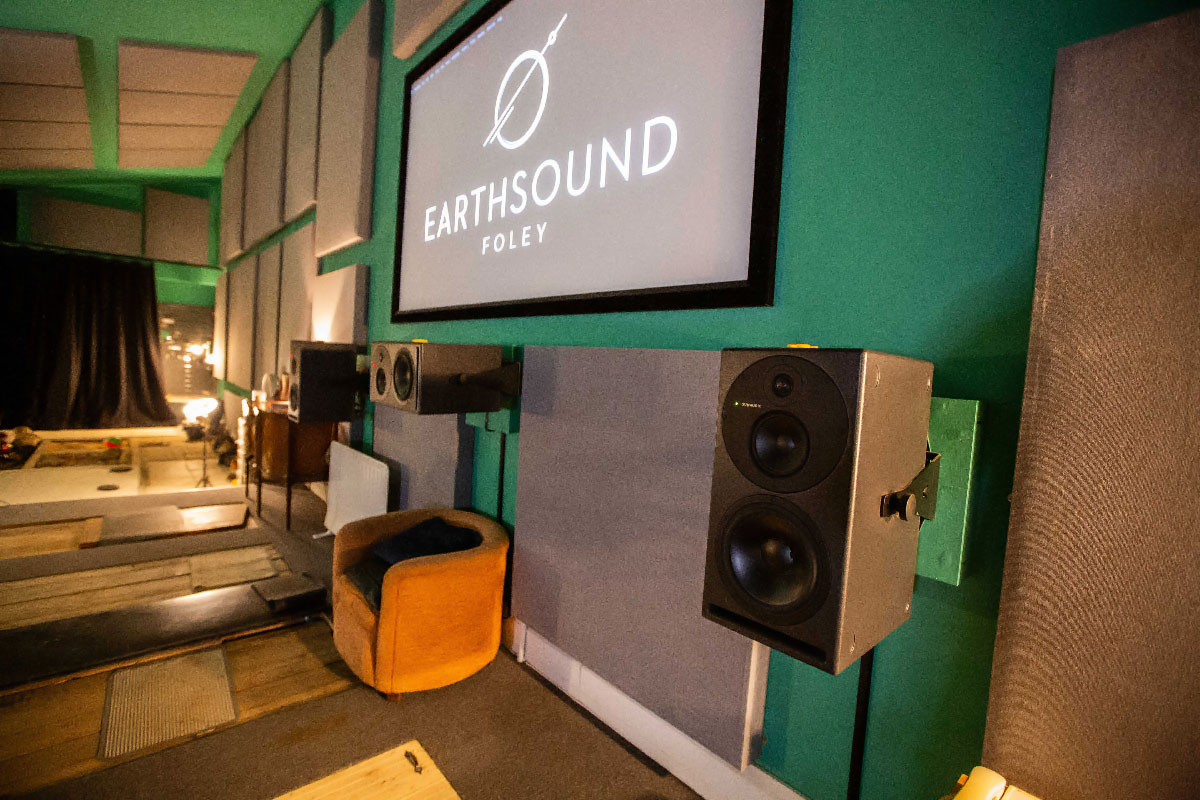
What makes a good Foley artist?
Whilst the majority of sounds are recorded in the studio, the guys aren’t opposed to heading outdoors in the search for the Foley grail. It’s also clear that Jason’s not afraid to put his body on the line, bringing new meaning to the term ‘suffer for your art’.
“There’s been occasions where sometimes we take the recording out of the studio,” explains Rob. “We did a film last year where we were recording in a quarry.”
“We broke in actually,” confesses Jason.
“We slightly broke in, yeah,” smirks Rob. “We wanted to get these slides and rolls down these slopes and just thought the best way to do it was, actually just to fall down this slope. So Jason was covered in cuts and bruises.”
“It did hurt, it was a much stupider idea than I first thought,” Jason reminisces. “I thought ‘this’ll be alright’ – I was trying to do Jake Gyllenhall falling twenty foot down this slope.
“Rob’s got the mics on and I said ‘you ready?’, and then I jumped. And half way down I’m thinking ‘what am I doing?’ haha. My leg was all ripped to pieces! And I got down and Rob says ‘sounded good, you want to go again?’. And I’m thinking ‘you go again’!”
“I think that’s definitely what Jason is bringing to it, like throwing himself into a sound,” says Rob. “If someone on-screen kicks through a door, Jason may actually kick through the door!
“There’s definitely an element of reality when you attack a sound properly and put your physicality into it.”
“On the farm here, we’ve got my old car. If we do a scene where we’re smashing up a car, we go out and smash it! Or we do a scene in a forest. Sometimes it might be best to do it in our earth pit, other times it’s best to go in the woods round here.
“Yeah it helps get that real crack of the wood, it can be better doing it out there,” adds Jason. “You get the sound of the world. We can then bring it back in here and if we haven’t quite got the sharpness we want, we can add it in.”
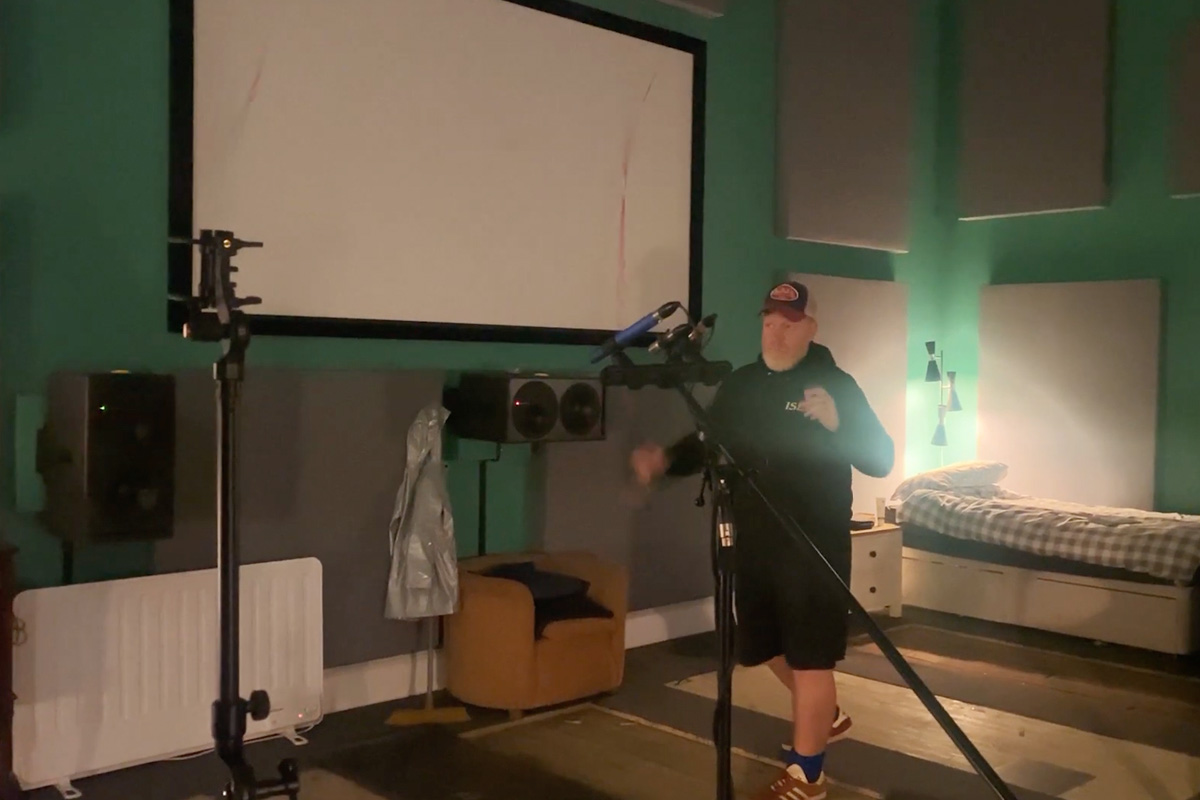
Building a Foley Recording Studio
Having worked in many different studios throughout the UK, Rob and Jason explained to us that a lot of Foley is actually recorded in less than desirable rooms – it’s for this reason that the duo decided to build their own space.
Purpose-built for recording and mixing professional Foley, the studio features a wide range of floor surfaces and pits several metres in length – completely isolated from the building’s structure – something the guys believe makes Earthsound unique within the UK.
“One of the big issues you get with Foley studios is resonancy and vibrations, either from other surfaces, or from the room itself,” says Rob. “This affects the sounds you’re recording – that resonance can get into your footsteps and other effects. And as a viewer, the second you recognise that those feet aren’t really taking place outside, it takes you out of the immersion.”
“A lot of studios will have one single surface which they then lay their other surfaces on,” explains Jason. “In our studio, we created a 10m x 10m space and dug down, then built ourselves a grid of concrete going straight down into the earth. So the pits are completely isolated from the inner walls of the studio. I don’t think anyone’s done that before on this scale, at least not in the UK.”
Along with its prop room – stocked full of everything you’d expect from a Foley studio – Earthsound is well-equipped to cover any scenario the pair may need to tackle in their line of work, including a bedroom and a bathroom area for different interior sounds.
The wide range of floor pits feature all kinds of indoor and outdoor surfaces – various types of wood, marble, concrete and tarmac, as well as earth, grass and gravel – whilst two water pits allow for recording everything from puddles to large splashes, with one sloped for organically moving between different water depths.
“A lot of studios only have a small, 1m x 1m area for the artist to perform footsteps, sometimes even smaller,” says Rob. “We always wanted to improve on that – our idea was that the artist should be able to actually walk.
“All the surfaces are therefore in long strips, so that Jason can walk up and down. This way he can achieve all sorts of variety in his walk. And he can easily transition through a lot of different environments, which can be interchangeable for any interior or exterior we need.”
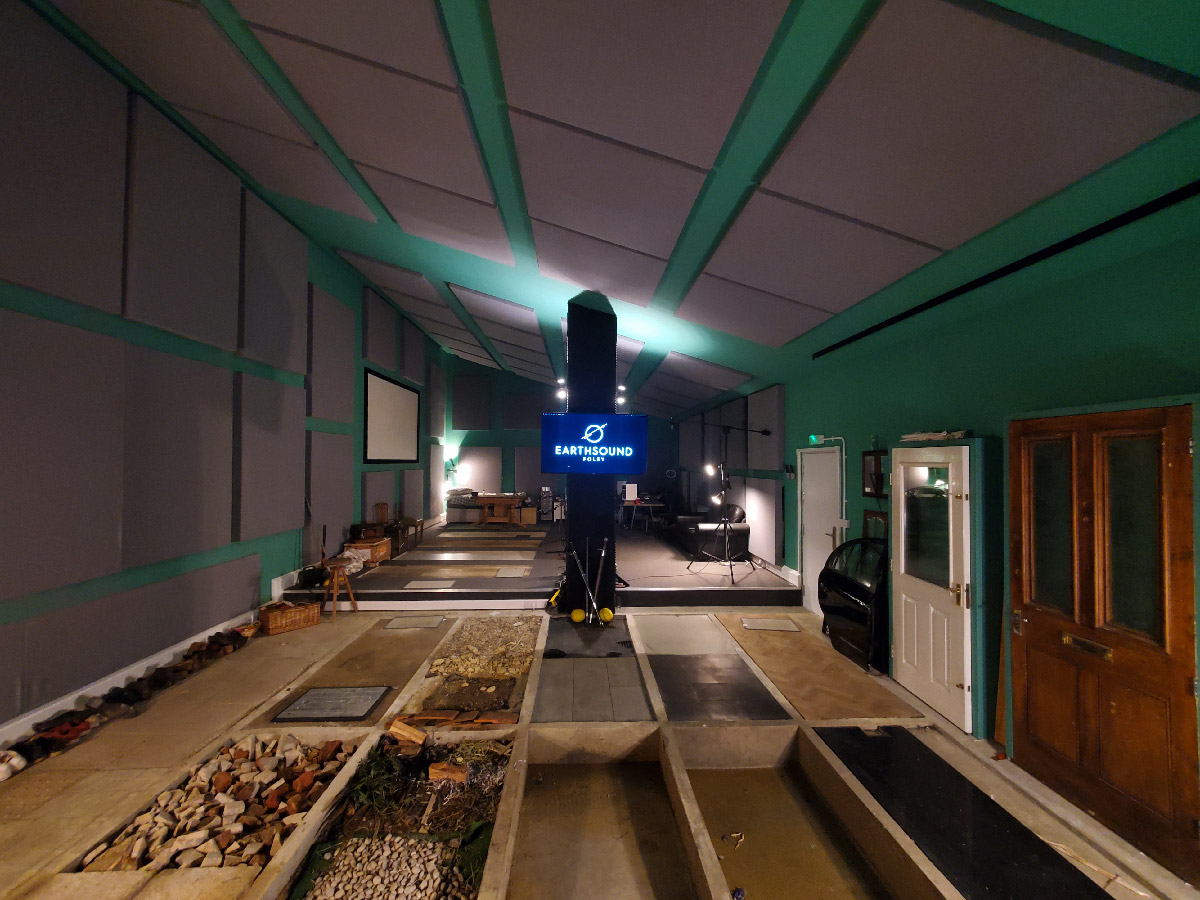
“Say we’re doing a programme set inside a school. If you’re walking on the parquet, you then step into an office with a different floor,” says Jason. “Or if you’re walking down the road, you might be going from paving slab to dirt, or tarmac to grass.”
“That’s why we kept everything close together, so Jason can move between environments in a single take,” continues Rob. “The moment you’re punching in and out for your recordings, you’re starting to lose something.”
“When people come in – other Foley artists, editors or sound supervisors – they say they can tell right away that the studio’s been built by an artist and a mixer, because everything’s in the right place,” adds Jason. “It’s right there ready for them to go, rather than having to go ‘oh where’s that switch? Where’s that surface?’ It’s all been pre-built, and thought out logically ahead of time by us.”
“Then over on this side of the room we’ve got our projector for when you want to play back a reel,” says Rob as he leads us over to the mix area. “Or let’s say you’re doing larger sounds on a big film – sometimes having that bigger screen will help you visualise them in a different way.
“Then we have the monitoring system which we’ve got in now – these Dynaudios in LCR. We’ve got a nearfield setup along with those for mains, so we can hear how it’s translating on different setups. That’s making us get a more accurate picture of the sound and how it might play on a mix stage.”
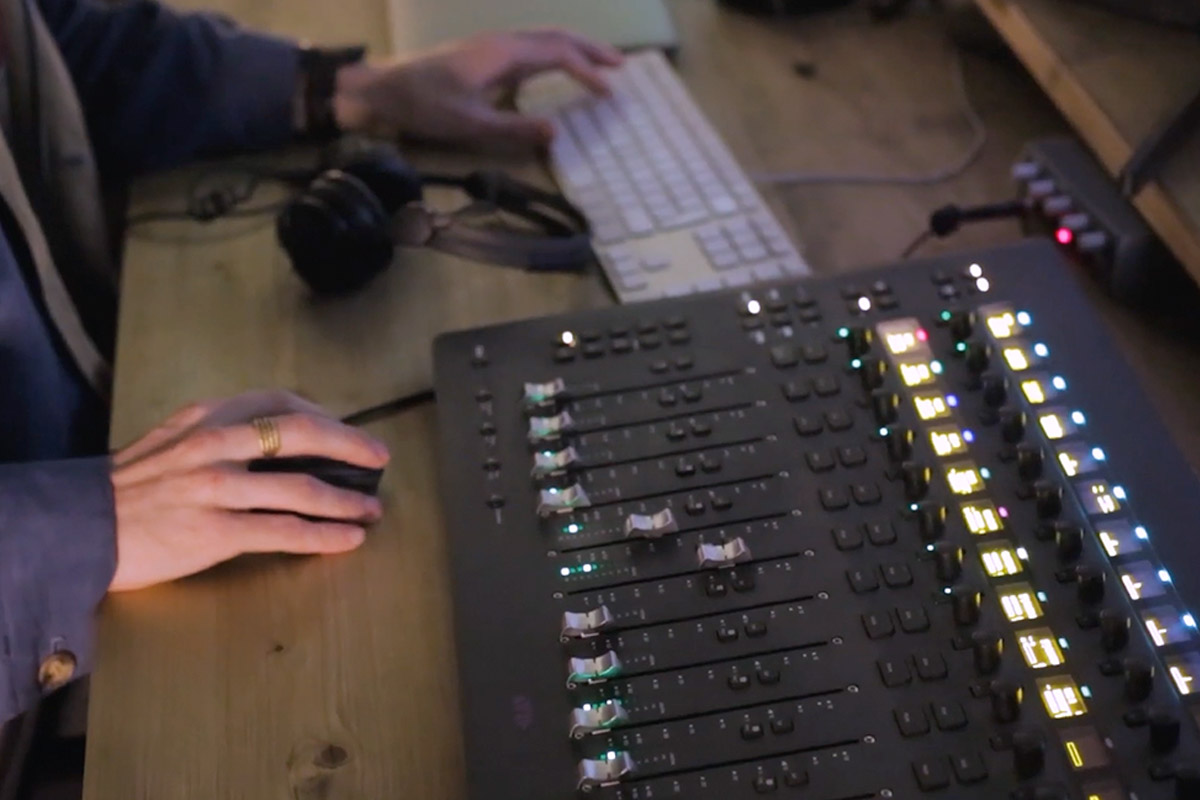
Foley Mixing with Dynaudio Core Series
“This part of it is where I live,” continues Rob as he takes through the Earthsound studio rig.
“It’s pretty basic, and it changes from time to time. Right now we’ve got an Avid S3. I’m actually monitoring on headphones most of the time when we record.
“When people usually build Foley studios, they’d have a control room. But the way me and Jason like to work, I like to get up, walk around and hear things. Then afterwards we’ll fire it out of one of the monitor setups.
“I’ve got a load of mics coming in here – sometimes eight at a time if I really want to confuse myself – and I’ll just be mixing takes, changing mic positions.”
When it came to choosing a main set of speakers, the pair decided on Dynaudio’s flagship Core 59 monitors in an LCR configuration. A household name in UK pro audio and post-production circles, Dynaudio monitors are perfect for providing the attention to detail required in professional film sound production.
“A lot of the mixers we know are premixing on them, so we wanted to line up our sound with what they have in their suites,” says Rob. “That way, what we’re hearing is as similar as possible to what they’re hearing in their studios.”
“we asked a few Re-recording mixers what they work on, and quite a few said Dynaudio”
“Yeah we asked a few Re-recording mixers what they work on, and quite a few said Dynaudio,” says Jason on the topic of choosing speakers. “That’s one of the reasons we went for these. It’s been a big investment – we could have gone a lot cheaper and smaller – but it’s been well, well worth it.”
“Accurate monitoring is of course very important to what we do,” nods Rob. “Especially stuff like the accuracy of transients. With Foley you could be recording these very small, particular sounds in one moment, then have someone smashing through a wall in the next.
“You need a speaker that can translate all of these things. When you’re listening to something like footsteps for example, you need something that’s not accentuating the bottom end too much. You just want clarity on how much is actually being captured.
“As Jason says, a lot of mixers we know are premixing on Dynaudios, so it seemed a good route to go down. The 59s have a fairly natural sound that’s translating well. We’re using them every day, and I’ve been really pleased with the sound of them so far.”
Our thanks to Earthsound. To get in touch with Jason Swanscott and Rob Price, head over to www.earthsoundpost.com.
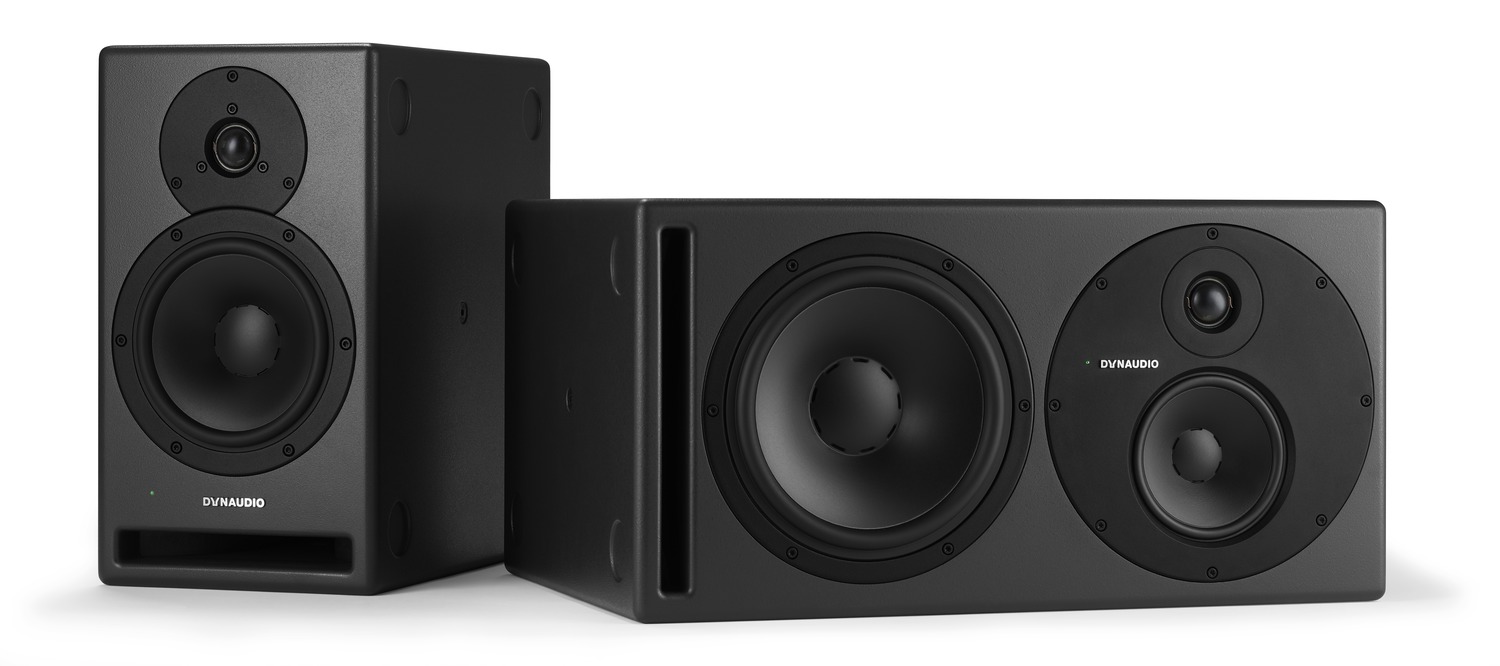
Additional Links:
See the full range of Dynaudio Core Series Monitors
To find out where to buy Dynaudio studio monitors in the UK, see our list of Authorised UK Dealers.
![]()
Dynaudio is world-famous for making hand-crafted high-end loudspeakers for living rooms, home cinemas, cars and professional recording studios.
Since the beginning in 1977, the company has made iconic products rooted in a love of music and film – reproducing exactly what the artist intended. Nothing more, nothing less.



















